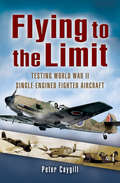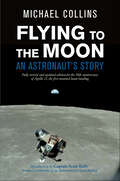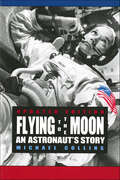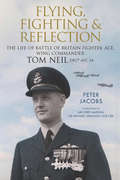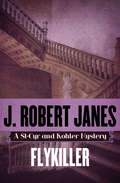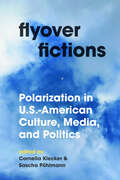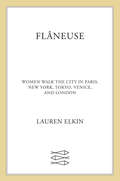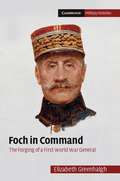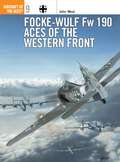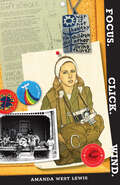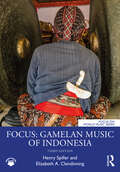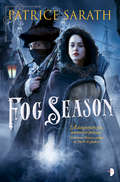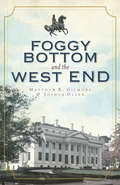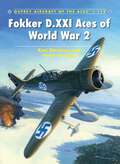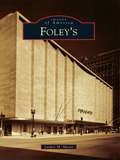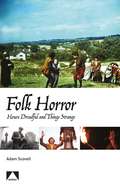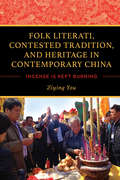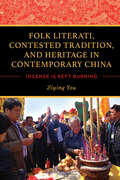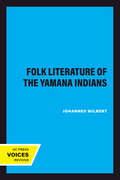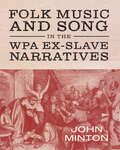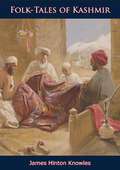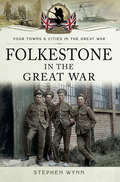- Table View
- List View
Flying to the Limit: Testing World War II Single-engined Fighter Aircraft
by Peter CaygillThe author of Javelin from the Cockpit looks at some of the more notable British, German, and American fighters through performance and handling trials. During the years preceding and during WW2, the RAF and the Royal Aircraft Establishment were responsible for the selection and procurement of British military aircraft and also to evaluate their capabilities against captured enemy models whenever possible. During the lend-lease agreement with the USA, the RAF and Fleet Air Arm operated several American designs, each of which was tested to evaluate its potential. This book looks at the key area of fighter aircraft and includes the test results and pilot&’s own first-hand accounts of flying seventeen different models, designed in the UK, America and Germany. The reader will learn of the possibilities of air superiority offered by these types and also their weaknesses. Types included are The Hawker Hurricane, Supermarine Spitfire, Boulton Paul Defiant, Hawker Tempest and Typhoon, Bell Airacobra, Messerschmitt Bf 109, Focke-Wulf Fw 190, Brewster Buffalo, Curtiss Tomahawk, North American Mustang, Grumman Martlet, Republic Thunderbolt, and Vought Corsair. All aircraft that saw a great deal of action throughout the War and which are now part of legend.
Flying to the Moon: An Astronaut's Story
by Michael CollinsBased on the adult bestseller Carrying the FireIn time for the 50th anniversary of man's first landing on the moon, this re-release of Michael Collins's autobiography is a bold, sparkling testament to exploration and perseverance. In this captivating account, space traveler Collins recalls his early days as an Air Force test pilot, his training at NASA, and his unparalleled experiences in orbit, including the Apollo 11 mission, the first manned lunar landing. The final chapter to this autobiography is an exciting and convincing argument in favor of mankind's continued exploration of our universe. Originally published in 1976 and updated for this new edition, including an introduction from astronaut Scott Kelly, Collins's voice and message are sure to resonate with a new generation of readers.
Flying to the Moon: An Astronaut's Story
by Michael CollinsIn this entrancing account, space traveler Michael Collins recalls his early days as an Air Force test pilot, his astronaut training at NASA, and his unparalleled experiences in orbit, including the Apollo 11 mission, the first manned lunar landing. The final chapter to his autobiography, revised and updated for this edition of Flying to the Moon, is an exciting and convincing argument in favor of mankind's continued exploration of our universe. "Several astronauts have written about their experiences, but none so well as Michael Collins...This is just the book to give the child whose parents made Yeager and The Right Stuff best sellers."-The Washington Post Book World
Flying, Fighting and Reflection: The Life of Battle of Britain Fighter Ace, Wing Commander Tom Neil DFC* AFC AE
by Peter JacobsThis is the thrilling account of the last remaining Battle of Britain ace fighter pilot, Tom Ginger Neil. Neil was one of an elite band, nicknamed The Few by Winston Churchill, he flew Hurricanes during 141 combat missions in that battle and went on to command the first Spitfire XII squadron during 1942/43 as the RAF went on the offensive in north-west Europe.In this, the only full account of Neil's life to be published in collaboration with his family, we learn how he became a poster boy for the war effort and how he credits his sixth sense for keeping him alive during the Second World War.There was, however, one terrifyingly close brush with death, when in 1940 he had a mid-air collision with another Hurricane. With the rear section of his aircraft gone, the plane was out of control and hurtling to the ground, yet somehow he managed to bail out and miraculously survived with only a minor leg injury.As well as RAF service during the Siege of Malta, Wing Commander Neil, who is now in his late nineties, also served with the Americans during the D-Day landings.During his career, Neil was awarded two Distinguished Flying Crosses for the destruction of at least fourteen enemy aircraft, and was a successful test pilot after the war before commanding a jet fighter-reconnaissance squadron in Egypt's troubled Canal Zone during the 1950s for which he was awarded the Air Force Cross.With contributions from the man himself, this book also looks at his life after the RAF and his career as a successful author. For military buffs and novices alike, it is a must-read account of a true war hero.
Flykiller (The St-Cyr and Kohler Mysteries)
by J. Robert JanesIn Vichy, a dead mistress points to an assassination plotAt the Battle of Verdun, Marshal Philippe Pétain&’s heroic leadership won him the respect and admiration of all of France. In the decades that follow the Great War, his ambition is boundless, but not until Hitler arrives does he claim the job he&’s always wanted. When the Wehrmacht subdue the French army, Pétain takes the reins of his conquered nation, becoming World War II&’s most infamous collaborator. In February 1943, as the war turns against Germany, Pétain administers his puppet state from the spa town of Vichy. In his eighties, but still able to admire a pretty face, he asks to borrow the mistress of one of his subordinates. Before she arrives, the girl is murdered. Fearing a plot against his life, Pétain calls in inspectors Jean-Louis St-Cyr and Hermann Kohler. But they find something far more sinister than a conspiracy against the war hero who became a war criminal.
Flyover Fictions: Polarization in U.S.-American Culture, Media, and Politics
by Sascha Pöhlmann Cornelia KleckerFlyover Fictions critically engages the history and contemporary use of the &“flyover country&” trope in American culture and repurposes the concept as an abstract tool for cultural studies. The term &“flyover&” arose in the 1970s with variations—&“flyover country,&” &“flyover states&”—mainly used as synonyms for the American Midwest in intranational banter regarding cultural differences from the dominant urban centers of New York City and Los Angeles. In recent years, the trope has shifted away from this playfulness and its traditional geographic reference points to indicate larger political and cultural developments that speak of a deepening polarization in the United States.Flyover Fictions is an exploration of the trope&’s current politicization, historical contexts, and general proliferation of meanings. Instead of resolving the ambiguities inherent in the concept, the volume considers what can be done with these ambiguities, and how precisely their fuzziness might be used to create an analytic tool to describe, understand, and critique processes of cultural hierarchization. The contributors show how flyover fictions may operate in different national contexts and also internationally or transnationally, not only providing a fresh perspective on historical and contemporary American culture but also supplying a conceptual toolbox for broader use.
Flâneuse: Women Walk the City in Paris, New York, Tokyo, Venice, and London
by Lauren ElkinThe New York Times Book Review Editor's ChoiceThe flâneur is the quintessentially masculine figure of privilege and leisure who strides the capitals of the world with abandon. But it is the flâneuse who captures the imagination of the cultural critic Lauren Elkin. In her wonderfully gender-bending new book, the flâneuse is a “determined, resourceful individual keenly attuned to the creative potential of the city and the liberating possibilities of a good walk.” Virginia Woolf called it “street haunting”; Holly Golightly epitomized it in Breakfast at Tiffany’s; and Patti Smith did it in her own inimitable style in 1970s New York.Part cultural meander, part memoir, Flâneuse takes us on a distinctly cosmopolitan jaunt that begins in New York, where Elkin grew up, and transports us to Paris via Venice, Tokyo, and London, all cities in which she’s lived. We are shown the paths beaten by such flâneuses as the cross-dressing nineteenth-century novelist George Sand, the Parisian artist Sophie Calle, the wartime correspondent Martha Gellhorn, and the writer Jean Rhys. With tenacity and insight, Elkin creates a mosaic of what urban settings have meant to women, charting through literature, art, history, and film the sometimes exhilarating, sometimes fraught relationship that women have with the metropolis.Called “deliciously spiky and seditious” by The Guardian, Flâneuse will inspire you to light out for the great cities yourself.
Flüstern des Verlangens: Ein mittelalterliches Burgmärchen (Burgmärchen #1)
by Amanda MarielIm Herzen des mittelalterlichen England schmieden eine Lady und ein Söldner eine Liebe, die stärker ist als Stahl, und kämpfen in »Flüstern des Verlangens: Ein Burgmärchen« sowohl gegen ihre ruhelose Vergangenheit als auch eine heraufziehende Gefahr. Tritt ein in eine Welt mittelalterlicher Intrigen, in der das Erbe von Almerry Castle durch das Feuer der Liebe und Tapferkeit geschmiedet wird. Im Herzen der üppigen Grafschaft Almerry entfaltet sich eine Geschichte von Ehre, Mut und einer unzerbrechlichen Bindung. Lady Isabel of Almerry ist eine ernstzunehmende Persönlichkeit – groß, mit langem schwarzem Haar und durchdringenden grünen Augen, hat sie die Fertigkeiten eines Ritters gemeistert, geschmiedet in den Flammen der Tragödie. Der brutale Mord an ihrer Mutter hat ihr Vertrauen zerschmettert und sie mit einem Herzen zurückgelassen, das von stählernen Mauern bewacht wird. Doch als ihre treue Hofdame Clarisse spurlos verschwindet, treibt Isabels unerschütterliche Entschlossenheit sie in das tückische Unbekannte. Auftritt Sir Ariston, ein Söldnerritter im Dienste von Almerry, dessen Vergangenheit von Trauer geprägt ist. Vom gnadenlosen Tod seiner Eltern und seiner Schwester vor seinen Augen heimgesucht, trägt er die Last einer herzzerreißenden Vergangenheit. Der Verlust seiner Frau und seines neugeborenen Kindes vertieft seine Wunden nur noch und hinterlässt ihn als einzelgängerische Gestalt mit blassem Haar und durchdringenden blauen Augen, die auf dem Schlachtfeld Trost sucht. Das Schicksal verwebt ihre Schicksale, als Ariston in den Wäldern um Almerry unerwartet auf Isabel stößt. Eine zufällige Begegnung erblüht zu einer unzertrennlichen Verbindung, die den Barrieren trotzt, die sie beide um ihre Herzen errichtet haben. Als sie sich auf eine gefährliche Reise begeben, um Clarisse zu retten, verwandelt sich ihre Partnerschaft in eine Liebe, die die Narben ihrer Vergangenheit überwindet.
Foch in Command
by Elizabeth GreenhalghFerdinand Foch ended the First World War as Marshal of France and supreme commander of the Allied armies on the Western Front. Foch in Command is a pioneering study of his contribution to the Allied victory. Elizabeth Greenhalgh uses contemporary notebooks, letters and documents from previously under-studied archives to chart how the artillery officer, who had never commanded troops in battle when the war began, learned to fight the enemy, to cope with difficult colleagues and allies, and to manoeuvre through the political minefield of civil-military relations. She offers valuable insights into neglected questions: the contribution of unified command to the Allied victory; the role of a commander's general staff; and the mechanisms of command at corps and army level. She demonstrates how an energetic Foch developed war-winning strategies for a modern industrial war and how political realities contributed to his losing the peace.
Focke-Wulf Fw 190 Aces of the Western Front
by John WealThe Fw 190 was the scourge of Fighter Command from the moment it appeared on the Western Front at Abbeville in August 1941 with II./JG 26. A nimble, speedy and well-armed adversary, the ‘Butcher Bird’ quickly proved superior to all Allied fighters of the time, particularly at medium to low altitude. Led by Experten of the calibre of 'Pips' Priller, Heinz Bar and Walter Oesau, the handful of Fw 190-equipped Jagdgeschwader flew against overwhelming odds, firstly on the Channel coast, and then in direct defence of the Reich when the Jagdflieger took on the might of the USAAF’s Eighth and Ninth Air Forces. This is their story.
Focke-Wulf Fw 190: The Early Years—Operations Over France and Britain (Air War Archive)
by Chris GossAn exploration of the early service of Germany&’s Fw 190, containing a unique collection of rare photos displaying the wide use of this aircraft. Widely regarded as the Luftwaffe&’s finest fighter, the Focke-Wulf Fw 190 first saw service in France in August 1941, immediately proving itself at least the equal of the then-latest Spitfire variant, the Mk.V. In this volume, Chris Goss takes a close look at the aircraft&’s features as well as its early history. There were a number of characteristics which contributed to the Fw 190&’s success. For instance, it was designed as a weapons platform and built to withstand heavy punishment. Another element in the Fw 190&’s construction which added to its durability was its wide-tracked, inwards-retracting landing gear. The Fw 190&’s BMW 801 D-2 radial engine also produced 1,677 horsepower, giving the early Focke-Wulf 190 A-8 a top speed of more than 400 miles per hour—which was considerably faster than the early variant Spitfires. As Goss points out, it was the Spitfires with which the Fw 190 pilots frequently had to contend when in combat over the English Channel, and particularly during the Allied raid on Dieppe in August 1942. The Fw 190&’s weapons capability also saw it used as a fighter-bomber against Allied shipping in the Channel and against the southeastern coasts of England in 1942 in tip-and-runs raids. These fast, low-level attacks proved difficult for the defending RAF squadrons to counter and only one Fw 190 was lost on these operations. In this first of two volumes, Goss examines the aircraft&’s features and early days, showing exactly why it was the workhorse of the Luftwaffe.
Focus. Click. Wind.
by Amanda West LewisWhat if your country is involved in an unjust war, and you’ve lost trust in your own government? It's 1968, and the Vietnam War has brought new urgency to the life of Billie Taylor, a seventeen-year-old aspiring photojournalist. Billie is no stranger to risky situations, but when she attends a student protest at Columbia University with her college boyfriend, and the US is caught up in violent political upheaval, her mother decides to move the two of them to Canada. Furious at being dragged away from her beloved New York City to live in a backwater called Toronto, Billie doesn’t take her exile lightly. As her mother opens their home to draft evaders and deserters, Billie’s activism grows in new ways. She discovers an underground network of political protesters and like minds in a radical group based in Rochdale College, the world’s first “free” university. And the stakes rise when she is exposed to horrific images from Vietnam of the victims of Agent Orange – a chemical being secretly manufactured in a small town just north of Toronto. Suddenly she has to ask herself some hard questions. How far will she go to be part of a revolution? Is violence ever justified? Or does standing back just make you part of the problem? Key Text Features author’s note chapters dialogue epigraph facts historical context literary references song lyrics
Focus: Gamelan Music of Indonesia (Focus on World Music Series)
by Henry Spiller Elizabeth A. ClendinningFocus: Gamelan Music of Indonesia, Third Edition, introduces the emblematic music of Southeast Asia’s largest country, as sound and as cultural phenomenon, highlighting the significant role gamelan music plays in the national culture while teaching of Indonesian values and modern-day life. Despite Indonesia’s great diversity—a melting pot of indigenous, Hindu, Buddhist, Islamic, Portuguese, Dutch, British, and modern global influences—a forged national identity is at its core. This volume explores that identity, understanding present-day Javanese, Balinese, Cirebonese, and Sundanese gamelan music through ethnic, social, cultural, and global perspectives. New to the third edition: Updated content throughout to reflect current Indonesian history and geography, as well as revivals of gamelan ensembles by the Cirebonese courts Modern examples of Indonesian musics, along with new uses of gamelan and other traditional musics An examination of school gamelan and ISBI as a center of innovation Expanded discussion on dangdut and its current status in Indonesia, along with Islam’s effect on dangdut Listening examples now posted as online eResources
Fog Season: A Tale of Port Saint Frey (Tales of Port Saint Frey #2)
by Patrice SarathA web of secrets and hidden identities ensnare two sisters and their family, in this delightful historical fantasy sequel to The Sisters MederosAfter the shocking events of last summer, the high society of Port Saint Frey has plenty to gossip about. Who was the Gentleman Bandit? Why hasn't he been captured? And what really happened that night when the Guildmaster disappeared? When the Guild hires Abel Fresnel, a detective with special powers of his own, to find the answers, Tesara and Yvienne Mederos have to avoid his probing questions and keep mum about their role in the events of that dark night. Everything's more or less under control until a dead man turns up in the dumbwaiter...File Under: Fantasy [ Card Sharks | Sharp Sleuth | Magic Fingers | Dial S for Sisters ]
Foggy Bottom and the West End
by Matthew B. Gilmore Joshua OlsenBeginning as a small town on the banks of the Potomac, the neighborhoods of Foggy Bottom and the West End grew into the capital's industrial center at the head of the Chesapeake and Ohio Canal, with factories, gasworks and breweries. The amalgam of working-class row homes, stately mansions and mills largely disappeared with the coming of the twentieth century, and in their place came the federal government, George Washington University, the Kennedy Center and the Watergate. With a collection of rare vintage images, local authors Matthew Gilmore and Joshua Olsen have compiled a stunning visual narrative of the evolution of these historic Washington, D.C. communities.
Foi Por Pouco: Breve História Da Guerra Das Malvinas
by Russell Phillips Aline Lacerda De Abreu"Foi por pouco" - Major General Moore, comandante das forças terrestres britânicas no Atlântico Sul.Em 1982, o britânico mediano não sabia da existência das Ilhas Malvinas e muito menos sobre sua posição como um disputado território bem próximo da costa argentina. Isto mudou quando os argentinos invadiram as ilhas e derrubaram a pequena força defensiva. Ambas as nações reivindicavam a posse da região mas, naquele momento, a Argentina imaginava que os britânicos abririam mão do território sem lutar. Ledo engano. O Reino Unido enviou uma força tarefa ao Atlântico Sul para retomar a posse das ilhas e a curta, porém intensa, guerra que se seguiu foi vencida "por pouco", nas palavras do Major General Sir John Jeremy Moore. Esta história reúne os eventos que se sucederam durante a guerra e as principais ações militares, incluindo detalhes de um plano argentino para afundar um navio da Royal Navy no porto de Gibraltar (descoberto pouco antes pela polícia espanhola) e um audacioso plano britânico de infiltrar soldados do SAS na Argentina para destruir, ainda em solo, um porta-aviões carregado de mísseis Exocet.
Fokker D.XXI Aces of World War 2
by Chris Davey Kari StenmanEntering service with the Dutch air force from early 1938, the aircraft was also built under license in Denmark and Finland. Production was also scheduled to commence in Spain too but Nationalist forces overran the factory before this commenced. The Dutch D.XXIs saw less than a week of action following the German invasion of the west on 10 May 1940, with many of the country's 28 fighters being destroyed on the ground. However, those that survived the initial onslaught inflicted losses on the Luftwaffe, 15 pilots sharing in the destruction of 14 German aircraft (fighters, bombers and transports). By then, however, the D.XXI had found everlasting fame in Finland during the Winter War of 1939-40. Proving itself a real thorn in the side of the Soviets, the fighter, operating in primitive conditions and against vastly superior numbers, Finnish D.XXIs racked up an incredible score against the Red Air Force, and in particular its bomber units. No fewer than ten pilots became aces during this brief, but bloody, campaign, with a similar number claiming four victories and subsequently 'making ace' in later types. The sturdy D.XXI was highly rated by the leading Finnish pilots of the time, boasting a good rate of climb and the ability to break off combat when required thanks to its high speed in a dive. The D.XXI also has the distinction of producing the first 'ace in a single mission' in World War 2, when then 1Lt Jorma Sarvanto shot down six Ilyushin DB-3 bombers on 6 January 1940. After spending a year providing home defence and flying coastal patrols during the early stages of the Continuation War in 1941, all surviving Finnish Fokker D.XXIs were relegated to the reconnaissance role, which they performed through to the end of hostilities in September 1944.
Foley's (Images of America)
by Lasker MeyerThe story of Foley's began in Ireland in the late 1800s when William L. Foley set sail for America. Ambition led him to Houston, where he opened a store and hired his two nephews, Pat C. and James. The nephews quickly felt an entrepreneurial urge to run their own store, so their uncle gave them $2,000 to get started. On February 12, 1900, the Foley Brothers Dry Goods Company at 507 Main Street opened for business. Approximately 44,000 residents visited the store that day, and sales of $128.29 were tabulated. Soon after Spindletop was discovered, Robert I. Cohen of Galveston bought the Foley Brothers company for his son George S. Cohen to operate. Cohen, along with the aid of six of the eight Meyer brothers from Galveston, built it into the largest store in Texas. In 1945, Fred Lazarus, from the department store clan in Ohio, came to Houston to visit his son at Ellington Field. He saw Houston's potential, and in 1946, Foley Brothers became Foley's, owned by Federated Department Stores.
Folk Horror: Hours Dreadful and Things Strange (Auteur Ser.)
by Adam ScovellInterest in the ancient, the occult, and the "wyrd" is on the rise. The furrows of Robin Hardy (The Wicker Man), Piers Haggard (Blood on Satan's Claw), and Michael Reeves (Witchfinder General) have arisen again, most notably in the films of Ben Wheatley (Kill List), as has the Spirit of Dark of Lonely Water, Juganets, cursed Saxon crowns, spaceships hidden under ancient barrows, owls and flowers, time-warping stone circles, wicker men, the goat of Mendes, and malicious stone tapes.Folk Horror: Hours Dreadful And Things Strange charts the summoning of these esoteric arts within the latter half of the twentieth century and beyond, using theories of psychogeography, hauntology, and topography to delve into the genre's output in film, television, and multimedia as its "sacred demon of ungovernableness" rises yet again in the twenty-first century.
Folk Literati, Contested Tradition, and Heritage in Contemporary China: Incense Is Kept Burning
by Ziying YouIn this important ethnography Ziying You explores the role of the "folk literati" in negotiating, defining, and maintaining local cultural heritage. Expanding on the idea of the elite literati—a widely studied pre-modern Chinese social group, influential in cultural production—the folk literati are defined as those who are skilled in classical Chinese, knowledgeable about local traditions, and capable of representing them in writing. The folk literati work to maintain cultural continuity, a concept that is expressed locally through the vernacular phrase: "incense is kept burning." You's research focuses on a few small villages in Hongtong County, Shanxi Province in contemporary China. Through a careful synthesis of oral interviews, participant observation, and textual analysis, You presents the important role the folk literati play in reproducing local traditions and continuing stigmatized beliefs in a community context. She demonstrates how eight folk literati have reconstructed, shifted, and negotiated local worship traditions around the ancient sage-Kings Yao and Shun as well as Ehuang and Nüying, Yao's two daughters and Shun's two wives. You highlights how these individuals' conflictive relationships have shaped and reflected different local beliefs, myths, legends, and history in the course of tradition preservation. She concludes her study by placing these local traditions in the broader context of Chinese cultural policy and UNESCO's Intangible Cultural Heritage program, documenting how national and international discourses impact actual traditions, and the conversations about them, on the ground.
Folk Literati, Contested Tradition, and Heritage in Contemporary China: Incense Is Kept Burning
by Ziying You“Ground-breaking . . . has implications for recognizing the existence and value of local, grass roots intellectual agency elsewhere in China and the globe.” —Mark Bender, the Ohio State UniversityIn this important ethnography Ziying You explores the role of the “folk literati” in negotiating, defining, and maintaining local cultural heritage. Expanding on the idea of the elite literati—a widely studied pre-modern Chinese social group, influential in cultural production—the folk literati are defined as those who are skilled in classical Chinese, knowledgeable about local traditions, and capable of representing them in writing. The folk literati work to maintain cultural continuity, a concept that is expressed locally through the vernacular phrase: “incense is kept burning.”You’s research focuses on a few small villages in Hongtong County, Shanxi Province in contemporary China. Through a careful synthesis of oral interviews, participant observation, and textual analysis, You presents the important role the folk literati play in reproducing local traditions and continuing stigmatized beliefs in a community context. She demonstrates how eight folk literati have reconstructed, shifted, and negotiated local worship traditions around the ancient sage-Kings Yao and Shun as well as Ehuang and Nüying, Yao’s two daughters and Shun’s two wives. You highlights how these individuals’ conflictive relationships have shaped and reflected different local beliefs, myths, legends, and history in the course of tradition preservation. She concludes her study by placing these local traditions in the broader context of Chinese cultural policy and UNESCO’s Intangible Cultural Heritage program, documenting how national and international discourses impact actual traditions, and the conversations about them, on the ground.“One of the most important and far-reaching books of folklore scholarship today.” —Amy Shuman, author of Other People’s Stories
Folk Literature of the Yamana Indians
by Johannes Wilbert"In my opinion this project of publications devoted to folk literature of South America is of paramount importance. South American mythology belongs to the spiritual inheritance of mankind on par with the great masterpieces of Greek and Roman antiquity and of the Near and Far East. At the present time this material is scattered in numerous publications most of which are not easy to locate. It would do a great service to scholars all over the world and to the general public to have them collected in a series of volumes."--Claude Levi-Strauss "It is time we had a set of volumes containing good source material for those who wish to study South American indigenous narratives; I am also quite certain that many nonspecialists would be interested in original documents of this kind."--Gerardo Reichel-Dolmatoff
Folk Music and Song in the WPA Ex-Slave Narratives (American Made Music Series)
by John MintonBetween 1937 and 1940 fieldworkers in the Works Progress Administration’s Federal Writers’ Project interviewed around 3,500 formerly enslaved people in North America, resulting in roughly 20,000 pages of still unedited and inadequately indexed typescript. These accounts—the WPA ex-slave narratives—are the most substantial collection by far of folklore and oral history gathered directly from enslaved people in America. It is arguably the single greatest body of African American folklore extant, and a significant portion is devoted to folk music and song. This book considers this treasure trove in all its relevant social, cultural, and historical contexts. Nineteenth-century Black folk music developed against the backdrop of North American slavery, the American Civil War, Emancipation, the Federal occupation of the South, and a successful white supremacist paramilitary and political insurgency that led to Federal withdrawal, officially sanctioned racial terror, and Southern apartheid. The WPA ex-slave narratives describe that history in remarkable detail. Despite their inestimable value, most of the ex-slave narratives remained unpublished until the late 1970s, being almost unknown except to folklorists. Even after publication, the collection’s sheer size was a barrier. Quoting extensively from the narratives and exhaustively annotated and indexed, this volume provides readers with detailed explanations and full references for every musical item or tradition featured in the ex-slave narratives. John Minton covers instrumental music and social dancing, spirituals and hymns, singing games and lullabies, ring plays and reels, worksongs, minstrel songs, ballads, war songs, slavery laments, and much, much more. Written for both specialists and general readers, with 134 illustrations, the book also offers a general overview of the ex-slave narratives, their contents, creation, and relation to the field of African American folklore as a whole.
Folk-Tales of Kashmir
by James Hinton KnowlesThe book is a collection of 40 fables and about 100 odd folktales collected by him during his stay in the Valley as a missionary.“KASHMÍR as a field of Folk-lore literature is, perhaps, not surpassed in fertility by any other country in the world…The vocation of a missionary brings one into close and constant “touch” with the people, from whom, as I glide along in the boat, or walk by the way, or squat in the hut, or teach in the school, I have learnt many things. My primary object in collecting these tales was to obtain some knowledge of Kashmírí, which is a purely colloquial language; my secondary object was to ascertain something of the thoughts and ways of the people. ..Many of these tales are, probably, purely Kashmírí in origin, while others are undoubtedly variants of popular tales current in India and other parts, which have been adapted and modified to suit the language, style of thought, and social usages of the country. To European Folk-tales, also, several of these stories will be found to have a great resemblance—notably the story of “The Two Brother,” to its counterpart, “St. George and the Dragon;” while many of the little stories mixed up in the tales, and quoted generally to explain the situation of the hero or heroine, will be recognised at once as variants of tales extant in France, Germany, Greece, Russia, England, and other countries.”Rev. James Hinton Knowles was a British Missionary to Kashmir in 19th century. He had visited Kashmir in the 1880s and authored two important books about Kashmiri language and culture. He is the author of books such as -- A Dictionary of Kashmiri Proverbs and Sayings is a detailed collection of Kashmiri proverbs and sayings.
Folkestone in the Great War (Your Towns & Cities in the Great War)
by Stephen WynnFolkestone became one of the most important British towns during the First World War. Through its harbor, an estimated 10 million troops and nurses either departed from or arrived back in England between 1914 and 1919. For those leaving it was, for the most part, to fight on the battlefields of the Western Front. For those returning, it was either because they had been wounded or that they were coming home for some well-earned leave.Because of its geographical location along the south coast, the town was always going to be heavily involved in the course of the war. Shorncliffe camp saw the arrival of Canadian soldiers, infantry who had come to practice in its purpose-built trenches, and cavalry units who put their horses through their paces on its open grounds. As well as this, there was an influx of Belgian refugees who arrived in the town, having escaped the tyranny of an advancing Germany Army. Most stayed for the duration of the war, enjoying the hospitality and friendship of local people who had taken them in with open arms.With the town being a hive of military activity, the people of Folkestone went about their business as best they could. For many this included worrying about the well-being of a loved one who had gone off to fight in the war, hoping that they would remain safe but not knowing if they would ever see them again. It wasn't just on the Western Front, however, that death reared its ugly head. On one occasion it happened in Folkestone, in what has become known as the Tontines Street Air Raid. Seventy-one men, women and children were killed and another ninety-four were injured this German air raid, which took place on 25 May 1917. This book is a poignant testimony to those people as well as the men who didn't make it back
